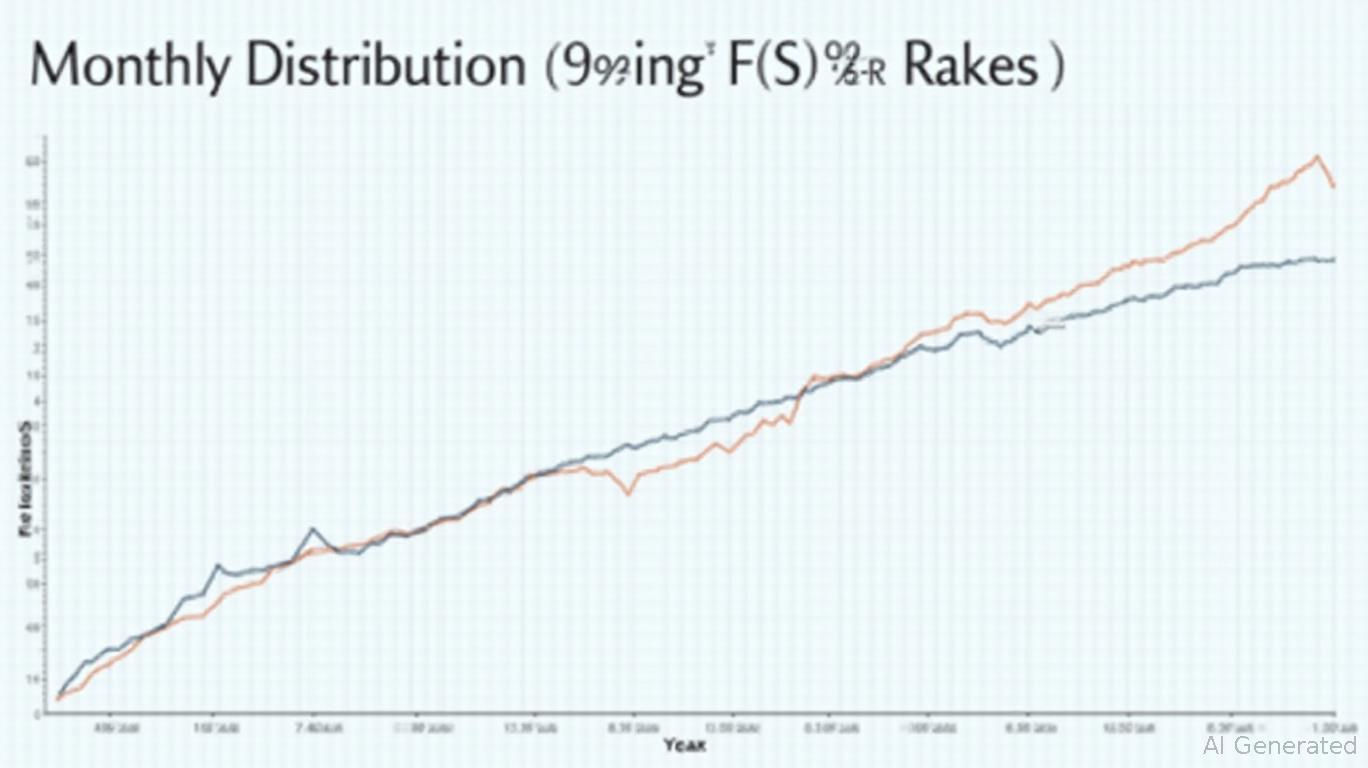RPU-B/RPU-U: A Steady Dividend Anchor in a Volatile Rate Environment
Income investors navigating the choppy
of rising interest rates are often caught between two forces: the need for yield and the demand for stability. The Purpose US Preferred Share Fund Non-Currency Hedged ETF (RPU-B/RPU-U) offers a compelling solution, leveraging its $0.094 monthly dividend and strategic focus on U.S. preferred shares to provide steady income while avoiding the pitfalls of passive exposure. Here's why this ETF deserves a spot in income portfolios—and how it stacks up against peers.The Case for RPU-B/RPU-U: Consistency Amid Rate Hikes
With the Federal Reserve's aggressive rate hikes weighing on bond prices, income-focused investors are turning to alternatives like preferred shares. These hybrid securities, which rank above common stock but below bonds in corporate capital structures, typically offer fixed or floating dividend rates—a feature that aligns with the search for stable payouts.
RPU-B/RPU-U, which invests in U.S. preferred shares, has delivered consistent monthly distributions of $0.094 per unit since its launch, with no cuts or suspensions even as rates climbed. This predictability is critical for retirees or income seekers who rely on steady cash flows. The June 2025 distribution, payable on July 3, continues this trend, underscoring the fund's reliability.

Why Non-Hedged Exposure to U.S. Financials Works
The fund's non-hedged structure (RPU-B for CAD investors, RPU-U for USD) offers a strategic advantage. U.S. preferred shares, particularly those issued by financial institutions, often carry floating rate coupons that reset with interest rates. This design protects against declining bond prices while allowing yields to rise alongside rates.
The fund's top holdings—though not disclosed in detail—are likely concentrated in high-quality U.S. financial firms, such as banks and insurers. These issuers have historically prioritized preferred share dividends even during stress periods, as skipping them would trigger credit downgrades. This resilience is a stark contrast to many corporate bonds, where defaults can disrupt income streams.
The non-hedged exposure also lets CAD investors benefit from a weaker Canadian dollar. While currency fluctuations add volatility, the fund's focus on U.S. issuers avoids the tracking errors of hedged ETFs, which often underperform when the USD strengthens.
RPU-B vs. Peers: Yield, Risk, and Strategy
To assess RPU-B's value, compare it to key competitors:
| ETF | Yield (June 2025) | Expense Ratio | Strategy Highlights |
|---|---|---|---|
| RPU-B | ~5.36% | 0.50% | Monthly dividends, non-hedged USD exposure, active management to avoid "negative-yield-to-call" securities |
| PFF | ~6.20% | 0.46% | Passive index tracking, includes lower-quality holdings |
| PFFA | ~10.00% | 2.48% | Aggressive leverage, higher risk |
| FPE | ~5.80% | 0.85% | Global holdings, mid-cap focus |
Key Takeaways:
- RPU-B's yield is moderate compared to aggressive peers like PFFA but competitive with broad-market ETFs like PFF and FPE.
- Its lower expense ratio (0.50%) versus FPE and PFFA gives it an edge in net returns.
- The fund's active management avoids securities with "negative yield-to-call" (where dividends fall below the call price), a common pitfall in passive funds.
Why Income Investors Should Add RPU-B to Their Portfolios
Stability in Volatile Markets
Preferred shares historically outperform bonds during rate hikes. RPU-B's focus on U.S. financials—a sector that benefits from higher rates—positions it well to weather Fed tightening.Currency Flexibility Without Hedging Costs
Non-hedged exposure lets CAD investors tap into U.S. yields without paying hedging fees, which can erode returns by 0.5-1.0% annually.Portfolio Diversification
Preferred shares have low correlation with bonds and equities, making RPU-B a useful hedge against interest rate and equity market risk.
The Bottom Line: A Balanced Income Play
RPU-B/RPU-U isn't the highest-yielding preferred share ETF on the market, but its combination of stability, low fees, and active risk management makes it a standout for conservative income investors. Pair it with a diversified fixed-income core (e.g., short-term bonds or dividend-paying stocks) to balance risk and return.
For investors allocating 5-10% of their income portfolio to preferred shares, RPU-B offers a disciplined entry point into a sector poised to thrive in a rising rate environment.


Comments
No comments yet